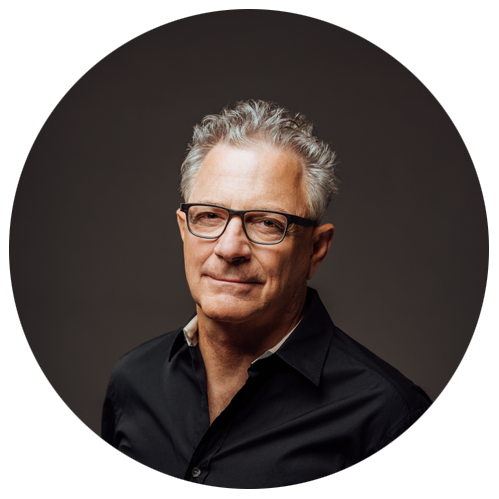If you’re feeling driftless in this accelerated age of technological innovation and information overload, you’re not alone. With depression and burnout on the rise, it’s no wonder many people, particularly younger generations, feel as if their lives are lacking meaning. If you find yourself wondering, “What is my purpose in life?”—the deeper purpose and sense of calling that exists beneath the mundanity of our career identities—the search for an answer may seem like an overwhelming quest. The answer, however, may be more accessible than you think. Dream research pioneers such as Dr. Steve Aizenstat, founder of Dream Tending, have found that befriending and observing the content of your own dreams can unlock insights about your deepest self and help you better understand your life’s purpose.
Dreams, Reality and Purpose
Most people have had the experience of going through something that feels incredibly vivid and tangible, both physically and emotionally, only to wake up and realize the events transpired in a dream. The average person experiences four to five dream cycles every night, creating a massive breadth of opportunities to experience and pay attention to the sometimes strange or mysterious images that appear to us in dream form. You may have wondered whether or not there is any deeper meaning behind the images or events and people depicted in these images. The answer, of course, is yes.
History of Dream Study
The idea that dreams can help you understand your life’s purpose isn’t new. In fact, it’s quite the opposite. Many ancient civilizations and cultures turned to dreams for direction in life or to improve self-awareness. The Talmud advised dream interpreters to evaluate dreams while considering the dreamer’s present circumstances (i.e., age, job and anxiety level) to glean meaning and relate the dream to the dreamer’s daily life. In fact, the Talmud establishes an interesting metaphor by likening an unobserved dream to an unread letter. Dreams, then, are viewed as communicative images bearing wisdom from a space that exists beyond linear time.
Dream Research Today
Modern research has found that our dreams reflect our waking-life psychological needs. Dr. Stephen Aizenstat, a depth psychologist and founding president of Pacifica Graduate Institute, has studied dreams as a powerful healing and generative modality for more than 35 years, and produced a rich oeuvre of literature regarding the day-to-day importance of dreams and their living images. He has also conducted worldwide dreamwork seminars for more than 20 years.
According to Dr. Aizenstat, “It is extraordinarily valuable to turn to our dreams. Dreams tell us what is happening. They depict the difference between vocation and obligatory employment. They offer ideas about unrealized aptitude and point to inherent gifts” (Aizenstat 140). If you feel as if the eight hours you spend at your desk barely connect with a deeper sense of truth about your calling—in other words, your “true vocation”—tending to dreams becomes “a process of uncovering the way back to our destiny, inner calling, and life purpose. [They] point the way homeward” (Aizenstat 140-141).
In other words, dreams may reveal potential skills or strengths of the dreamer. Knowing your strengths can lead to finding better suited, more fulfilling work. This can help lead you to your “calling” rather than just another “job.” Dreams also offer insight into other areas of our life that can bring us happiness.
When examining dreams rather than events in the present, individuals have the freedom to slow down and see things differently. They can listen, become curious and engage with their intuition.
How to Find Purpose in Life From Dreams
Dr. Aizenstat pioneered Dream Tending, a technique used to tune in and attend to one’s dreams. This method involves several phases, including listening to the dream, making associations between the dreamer and the dream, interacting with dream images and engaging with the living quality of the dream.
As part of Dream Tending, dreamers take note of the characters and creatures of a dream. They find associations between their own personal history and the events or imagery of their dreams. Dreamers may find it helpful to artistically express their dreams, for example, by drawing or painting dream imagery. Here is an exercise that can help you discern what your true calling may be:
- Imagine that you’re forming a new corporation. Give it your first and last name followed by Inc. For example, mine would be Lynn West, Inc.
- Create a personal mission statement that expresses your sense of calling. Write it down on a piece of paper.
- Gather information from your dreams after you’ve completed the first two steps. Jot down, in detail, the dream images that come to you and what they are pointing to.
- Who are the characters in your dream? What are they saying regarding questions related to your true calling? Who is the stockholder in this imagined enterprise?
- Think about your parents and their vocations. Were they happy at work? Did they have unexpressed desires?
- What recurring dream images from childhood come into your awareness? What is the root desire, or yearning, at the root of the dream figure that comes to you? Does this desire match the unmet vocational wishes of your parents? Consider other members of your immediate family.
- Continue to tend to this living image, noticing what clarity and certainty arises.
Using this practice can help connect dreams back to waking moments, deepening the dreamers’ understanding of their true passions, talents and goals. In doing so, dreamers may more easily find their purpose in life.
By Lynn West
References:
- Dream Tending: Awakening to the Healing Power of Dreams by Dr. Stephen Aizenstat, Ph.D.
- http://dreamtending.com/tendingyourdreams.pdf
- http://dreamtending.com/visible_world.pdf
- http://dreamtending.com/about.html
- https://www.nbcnews.com/health/health-news/major-depression-rise-among-everyone-new-data-shows-n873146
- https://www.cnbc.com/2018/08/14/5-ways-workers-can-avoid-employee-burnout.html
- https://www.ncbi.nlm.nih.gov/pmc/articles/PMC5775982
- https://www.pacifica.edu/
- http://www.aish.com/sp/ph/Judaism-and-Dreams.html

Stephen Aizenstat
Stephen Aizenstat, Ph.D., is the founder of Dream Tending, Pacifica Graduate Institute, and the Academy of Imaginal Arts and Sciences. He is a world-renowned professor of depth psychology, an imagination specialist, and an innovator. He has served as an organizational consultant to major companies and institutions, and as a depth psychological content advisor to Hollywood film makers. He has lectured extensively in the U.S., Asia, and Europe. He is affiliated with the Earth Charter International project through the United Nations, where he has spoken. Professor Aizenstat is the Chancellor Emeritus and Founding President of Pacifica Graduate Institute. He has collaborated with many notable masters in the field including Joseph Campbell, James Hillman, Marion Woodman, and Robert Johnson.
Unleash your creativity and innate genius
Learn the Power, Purpose and Intelligence of Dreams
Improve the quality of your relationships, discover your authentic life purpose and improve your emotional and physical health with the Dream Tending Academy.
Free e-book download
For over 40 years, I have devoted my life to understanding the profound wisdom and healing power that exists within each of us. I am excited to share my latest e-book that showcases how to tap into your dream state through the powerful applications of creativity and innovation. By following my groundbreaking methods and techniques, you will discover how to unlock your creative potential, increase your emotional and intellectual bandwidth, and realize your personal and professional goals. Download my e-book and unlock the secrets of your dreams and deep imagination!








